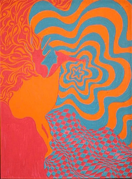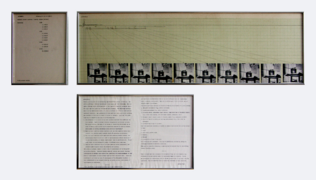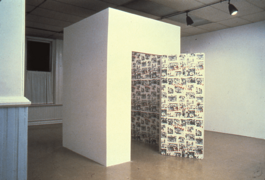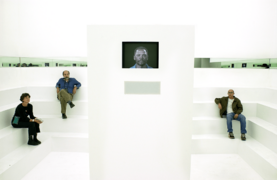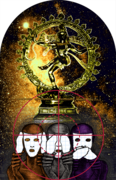Adrian Piper facts for kids
Quick facts for kids
Adrian Piper
|
|
|---|---|
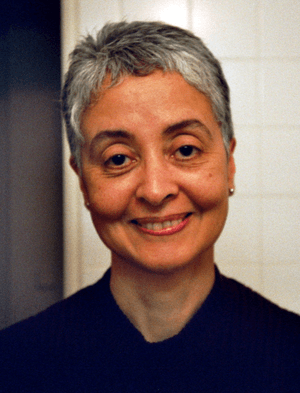
Piper in 2005
|
|
| Born | September 20, 1948 New York City, US
|
| Education |
|
| Known for | Founding the Adrian Piper Research Archive (APRA) |
Adrian Margaret Smith Piper (born September 20, 1948) is an American conceptual artist and philosopher. She creates art that makes people think deeply about themselves and the world. Her work often explores how people might feel like outsiders or face unfair treatment, especially because of their race. She uses her own life and experiences as examples in her art.
Piper has won many awards and is known for greatly influencing "Conceptual art." In 2002, she started the Adrian Piper Research Archive (APRA) in Berlin, Germany. This archive became the main focus of a foundation created in 2009.
Contents
Life and Education
Adrian Piper was born in New York City on September 20, 1948. She grew up in Manhattan in a Black family that was doing well. She went to a private school where most students were wealthy and White.
She first studied art at the School of Visual Arts, earning a degree in 1969. Then, she studied philosophy at the City College of New York, graduating with high honors in 1974. Piper continued her philosophy studies at Harvard University, getting her master's degree in 1977 and her doctorate in 1981. She also studied in Germany at the University of Heidelberg.
During her philosophy studies, Piper focused on a famous book by Immanuel Kant. This book, Critique of Pure Reason, greatly inspired her artworks, especially Food for the Spirit (1971).
In the late 1960s and early 1970s, Piper was influenced by other artists like Sol LeWitt. She worked at the Seth Siegelaub Gallery, which was known for showing conceptual art. In 1970, her art was shown in a big exhibition at the Museum of Modern Art. Piper has said that she felt pushed out of the art world during this time because of her race and gender. Because of this, her art began to focus on feeling like an outsider and dealing with racism. She wanted her art to help people face their own unfair views.
Piper received important art awards, including fellowships from the National Endowment for the Arts in 1979 and 1982, and a Guggenheim Fellowship in 1989. She taught at many universities, including Harvard University and Stanford University. In 1987, she made history by becoming the first African-American woman philosophy professor to get a permanent teaching position (called academic tenure) in the United States. Later, in 2008, she lost her job at Wellesley College because she refused to return to the U.S. while she was listed as a "Suspicious Traveler" by the government.
Piper is divorced and does not have children. She lives and works in Berlin, where she runs the Adrian Piper Research Archive. In 2015, she won the Golden Lion award, which is a very important art prize, at the Venice Biennale. In 2017, she received an honorary doctorate degree for her achievements in fine arts.
Ideas and Beliefs
In 1981, Adrian Piper wrote an essay called "Ideology, Confrontation and Political Self-Awareness." In this essay, she talked about the ideas she explores in her art. She thought about how people examine themselves and the beliefs that make them feel different from others. These beliefs often start when we are young and we don't question them until new experiences challenge them. This challenge creates doubt, which is important for self-examination and changing our beliefs.
Piper believed that the ideas we hold onto the most are often those that help us understand who we are and our place in the world. She pointed out that these "ideologies" can sometimes lead to "stupid, insensitive" behavior that hurts others. Piper hoped that her essay would make readers think about their own beliefs and perhaps even doubt them a little. If it did, she would consider it a great success.
Piper's work is also deeply connected to her studies in philosophy, including eastern philosophy. She started practicing yoga in 1965 and became interested in the spiritual traditions of Hindu philosophy. Many of her artworks include ideas from Eastern philosophy, like Mythic Being: Doing Yoga (1975) and Mokshamudra Progression (2012). Piper believes that Western philosophy could learn a lot from Eastern traditions, especially about understanding ourselves beyond our ego and growing spiritually.
Career
In June 1968, Adrian Piper's work was published in 0 to 9 magazine, which was a cutting-edge publication. The first time she was mentioned as an artist in the news was in the Village Voice in March 1969, when she was just 19. This was about her first solo exhibition, a mail art project called Three Untitled Projects. She sent stapled booklets to over 150 artists, curators, and dealers, listing them as "Exhibit Locations." This way, she shared her art on her own terms.
Street Performances (1970s)
In the 1970s, Piper started a series of street performances called Catalysis. For example, she would paint her clothes white, wear a sign that said "Wet Paint," and then go shopping. The word "catalysis" means a chemical reaction where something helps the reaction happen but doesn't change itself. Piper saw her audience's reactions as the "unchanged agent."
In the summer of 1971, Piper spent time in her New York City loft reading Immanuel Kant's Critique of Pure Reason. She did this while doing yoga, fasting, and writing. She felt like she was losing touch with her physical self. To fight this feeling, she created Food for the Spirit. She would take pictures of herself in front of a mirror and repeat parts of the book that made her feel disconnected. The artwork includes 14 photographs in a binder.
Funk Lessons (1980s)
Between 1982 and 1984, Piper held events called Funk Lessons. She invited people to learn about the dance styles, culture, and history of funk music. Piper believed that funk music came from African tribal music and was important to the growing presence of Black culture in America and the fight for equal rights. By sharing this music with different groups of people, Piper wanted to start conversations about the value of dance music and the politics of race and identity.
Each "lesson" was advertised on postcards and was not called an "art event." Piper would play music samples and teach dance moves. Slowly, she would also share stories about Black history and culture. She encouraged discussions, which sometimes became very lively. Piper saw these events as a way to create art that brings people together and encourages social interaction. Her main idea for the work was, "Get down and party together."
Scholarship
In 1981, Piper published an essay called "Ideology, Confrontation, and Political Self Awareness." In it, she described three common mistakes in thinking that she believed shaped people's beliefs. She argued that these mistakes could lead to people thinking they know everything about others, forgetting that their own views are just as limited as anyone else's.
In 2008, she published a two-volume essay, "Rationality and the Structure of the Self." In this work, Piper suggests that without understanding our own moral differences, we wouldn't be able to form relationships with others or act kindly towards them.
Gallery Work
Much of Piper's art explores issues of racial passing (when a person of one race is thought to be of another), racism, and gender in the United States. For example, in her 1986 performance piece, "My Calling (Card) #1," she gave a card to anyone who made a racist comment in front of her. The card let them know she was an African American woman and that their comment made her uncomfortable. She handed out these cards at parties to quietly challenge racism.
To challenge ideas about women, Piper also explored the negative thoughts people had about a woman sitting alone at a bar. To fight these ideas, between 1986 and 1990, she would hand out "My Calling Card #2." This card asked people to respect her privacy and explained that being alone didn't mean she wanted to be approached. Both of these Calling Cards were her way of making a statement about her identity.
Racial passing is also explored in another of Piper's performance pieces, "Cornered" (1988). In a video, she tells the audience, "I'm black." She then explains that this might surprise viewers because she has a lighter skin tone and could be mistaken for White, but she chooses to identify as Black.
Piper's Everything #5.2 (2004) is a mirrored glass shaped like a tombstone. It shows the viewer's reflection, the words "Everything Will Be Taken Away," and the hidden structures behind the gallery wall. This artwork makes viewers think about how art institutions decide what art is valuable, and also about their own place in the world.
In The Probable Trust Registry, which won Piper a top award at the Venice Biennale in 2015, she asked visitors to sign agreements with themselves. They had to agree to one of three statements, like "I will always do what I say I am going to do." The judges said that Piper's work asks people to take personal responsibility throughout their lives. In 2017, this work was a main part of her first solo exhibition in a German museum.
A large exhibition covering 50 years of Piper's work was shown at the Museum of Modern Art (MoMA) in New York from March to July 2018. It was the first time MoMA dedicated an entire floor to a living artist.
- Selected images
Foundation
The Adrian Piper Research Archive Foundation
The Adrian Piper Research Archive Foundation is located in Berlin, Germany. Its main purpose is to collect and preserve Adrian Piper's art, philosophical writings, and work related to yoga. The foundation aims to protect her work and make it available for students, scholars, and the public who are interested in her art.
The foundation offers a fellowship award to support research. It is also raising money to finish renovating its home in Berlin, make it more accessible to the public, and increase the amount of its annual fellowship. They also plan to start a new fellowship for philosophy students writing their dissertations. The goal is to raise €4,000,000.
The Berlin Journal of Philosophy
Started in 2011, The Berlin Journal of Philosophy is an online, open-access journal. It publishes philosophical articles that have been reviewed by experts without knowing the author's name. This journal is managed and published by the APRA Foundation Berlin.
Collections
Adrian Piper's work can be found in many important art collections, including:
- Art Institute of Chicago, Chicago, IL
- Metropolitan Museum of Art, New York
- Museum of Modern Art, New York
- National Gallery of Art, Washington, DC
- Walker Art Center, Minneapolis, MN
See Also
 In Spanish: Adrian Piper para niños
In Spanish: Adrian Piper para niños


